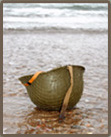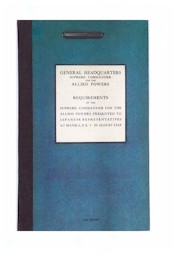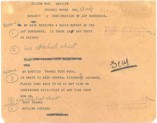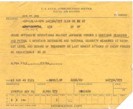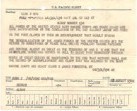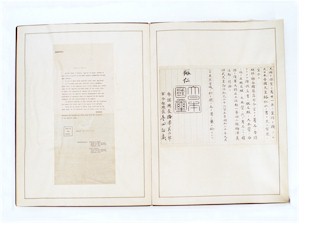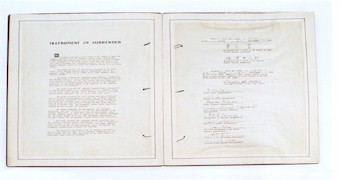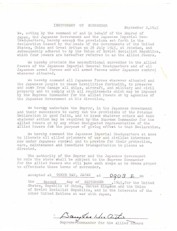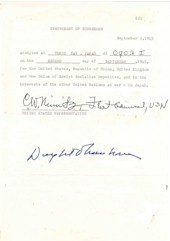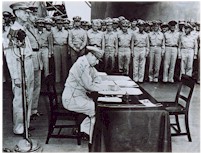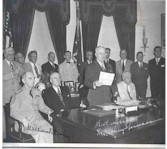Surrender of Japan
Please take the time to enjoy a small selection of the artifacts that we have on display at the Museum of World War II. Every artifact in our collection has its own history, and ties to human lives. Each artifact has a small section of its story told here. You can use this map to jump to any section of the Museum of World War 2 to view a selection of the artifacts displayed there. You can click any image for a larger view. This section contains artifacts specifically about the Japanese Surrender at the end of World War 2. On September 2, 1945, Japan surrendered on board the Battleship Missouri in Tokyo Bay. Only two copies of the original Instrument of Surrender were signed, one retained by Japan, and the other by the United States. General Douglas MacArthur was instructed to have official, full-sized facsimiles prepared from the original, one for each of the nine nations. MacArthur, realizing that he would not receive one of these, increased the number of photographic facsimiles to twenty, eleven bound in blue leather and nine for his own distribution were bound in red leather. PLEASE NOTE: All firearms displayed at the Museum of World War II have been rendered inoperable. |
|

